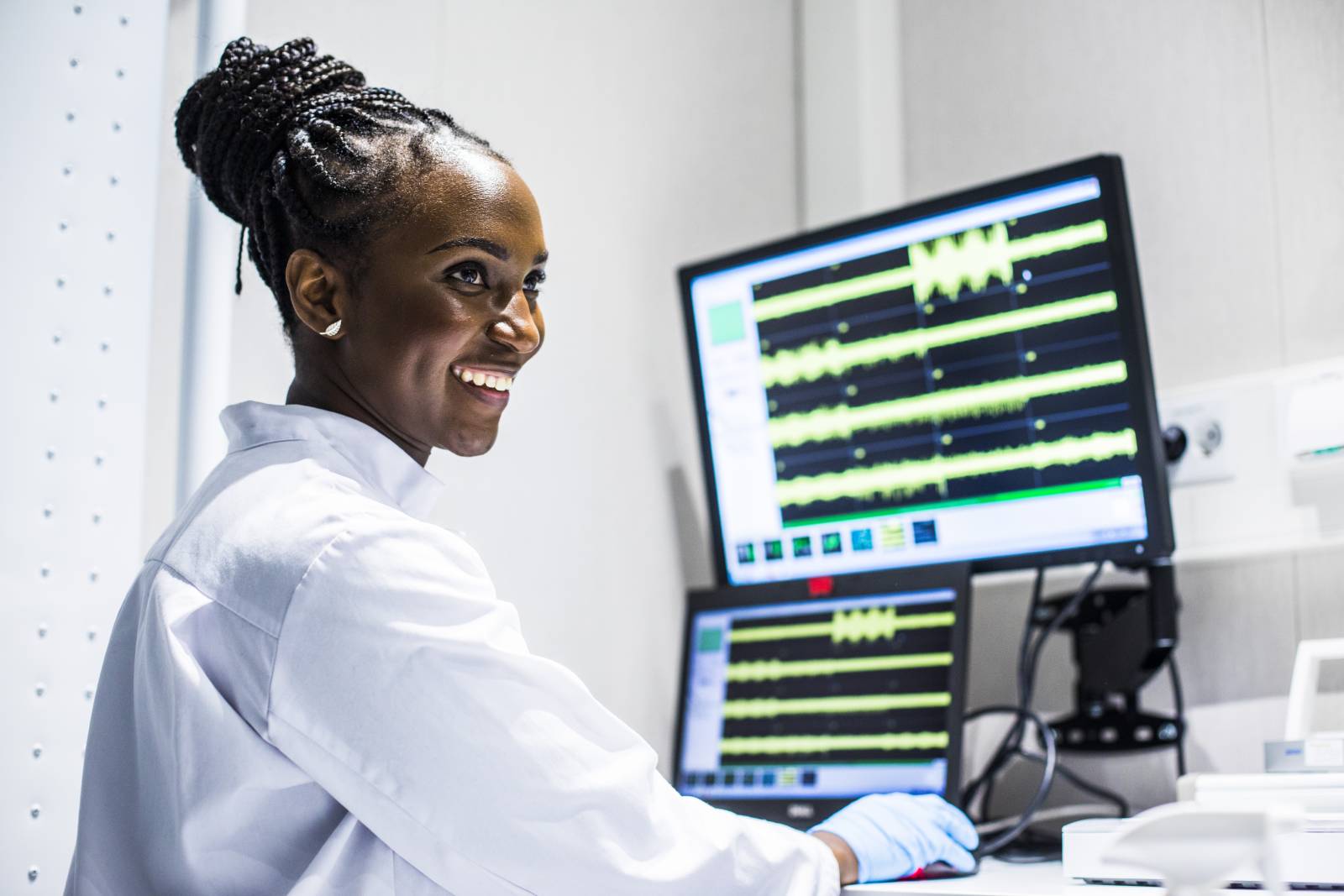A novel chip for studying axonal biology and damage was developed as a part of the Centre of Excellence in Body-on-Chip Research. The research was done in the collaboration with the researchers from Neurogroup led by Adj. Professor Susanna Narkilahti, Micro-and Nanosystems research group led by Professor Pasi Kallio and Smart Photonic Materials research group led by Professor Arri Priimägi.
The developed chip allows isolated and directional axonal growth of human pluripotent stem cells (hPSC)-derived neurons that makes the research of axons more feasible. We have combined microfluidic chip with an azobenzene-based substrate material.

In the microfluidics polydimethylsiloxane (PDMS)-based chip axons can passage between the compartments via microtunnels. Conventionally, hPSC-derived neurons tend to grow their axons in the random orientation making the axon-specific research challenging. For detailed and precise axonal studies, it is important that isolated axons would grow in the aligned, unidirectional manner, which is not achieved at least for human hPSC neurons without additional surface modifications.
To guide the axonal growth, we integrated the azobenzene-containing material DR1-glass into microfluidic chip. Azobenzene is a light-responsive material and in response to structured light irradiation, this material can reversibly change its surface topography due to azobenzene photoisomerization. Patterned nanogrooves were patterned in the DR1 glass that enabled the directional growth of the axons.
We showed that developed chip resulted superior axonal isolation and alignment in the desired direction, which was maintained for at least six weeks. As a proof-of-concept study, we modeled axonal damage using oxygen-glucose deprivation (OGD) treatment and showed quantifiable degeneration of axons.
This is a relevant in vitro model for axon-targeted research that combines both axonal isolation from somas using a microtunnel technique and axonal alignment using an interference lithography technique for patterned DR1-glass resulting in the compartmentalized aligned axons.
A published paper is now available in Advanced Materials interfaces
Mervi Ristola, Chiara Fedele, Sanna Hagman, Lassi Sukki, Fikret Emre Kapucu, Ropafadzo Mzezeva, Tanja Hyvärinen, Pasi Kallio, Arri Priimagi, Susanna Narkilahti. Directional Growth of Human Neuronal Axons in a Microfluidic Device with Nanotopography on Azobenzene-Based Material. Advanced Materials interfaces2021, DOI: 10.1002/admi.202100048
This work was supported by the Academy of Finland (grants 296415, 312414, 312411, 332693, and 33070), Business Finland (Human Spare Parts project), the Finnish Cultural Foundation, Emil Aaltonen Foundation, Orion Research Foundation, The Päivikki and Sakari Sohlberg Foundation, Instrumentarium Science Foundation.

